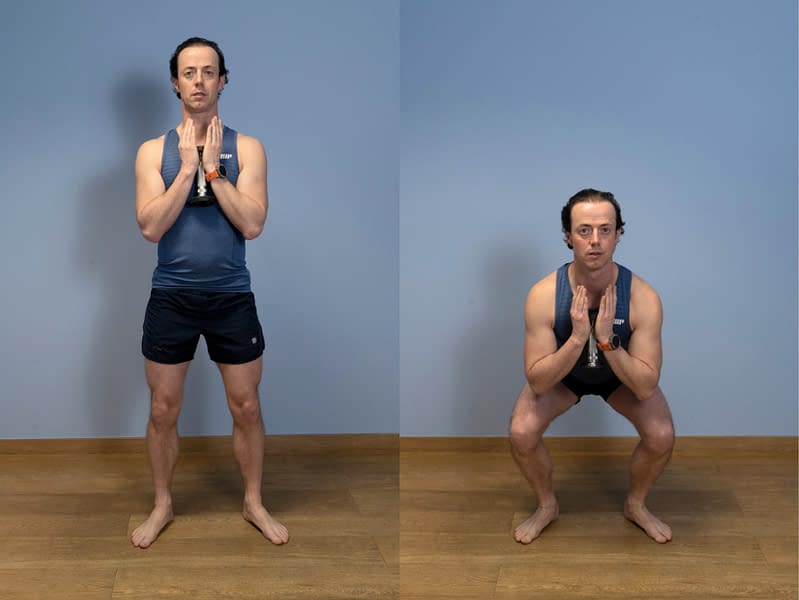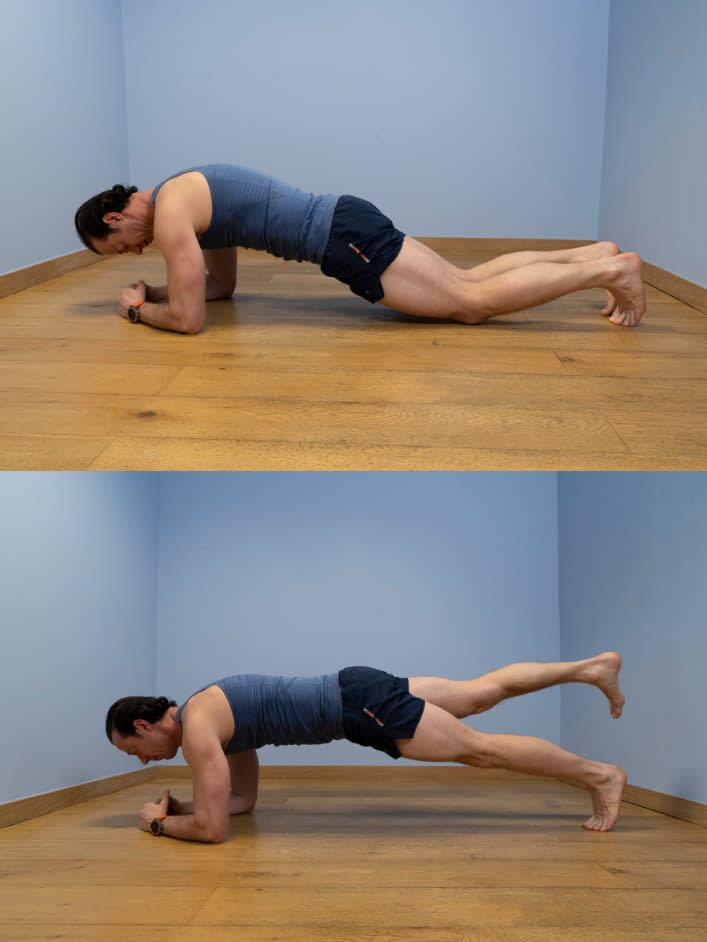Adolescent Hip Dysplasia Advanced Exercise Programme
Aim to perform this programme a minimum of once per day unless prescribed otherwise. As with any new exercise, start slowly (repetitions as able) and build up as you are able within the guidelines below.
Pain should not exceed 3/10 whilst completing this exercise programme.
1. Weighted squat
- Stand upright with your feet hip-width apart and holding a weight securely against your chest and allow your feet to turn out between 9-12 to your comfort.
- Start to unlock your hip and knees and sit back into a squat like you were sitting down, keeping your weight in your heels.
- At the same time, your head and chest will come forwards to maintain your balance, aim to keep your back straight.
- Go down as far as you feel comfortable or until your thighs are parallel with the floor.
- Push back up through your heels and come back up to standing and repeat.
2. Step up
- Stand at the bottom of a step facing it – hold on to the wall/bannister if required for balance and/or support.
- Lift the affected leg and place the foot of the leading leg fully on the step.
- Straighten the leading leg by squeezing the thigh and buttock muscles as you rise on to the step and bring the trailing leg up to in to standing.
- Reverse the movement carefully and with control, placing emphasis on using the standing leg.
3. Plank with leg lift
- Lie on your front.
- Keeping your knees on the floor lift up onto your elbows.
- From this starting position lift one leg 2-3 inches off the floor. Place back down and then repeat on the other leg.
- Try to keep the hips/pelvis still at all times.
- If this is too difficult you can perform the same exercise with the knees on the floor.
We recommend consulting a musculoskeletal physiotherapist to ensure exercises are best suited to your recovery. If you are carrying out an exercise regime without consulting a healthcare professional, you do so at your own risk. If you have any concerns whilst completing these exercises, please contact a healthcare professional.
More Plans
These are initial exercises aimed at improving the strength and flexibility of muscles that insert around the hip and pelvis region. These may be performed 2 -3 times a day, working within a comfortable range of movement. This should not exceed any more than 3/10 on your perceived pain scale.
- 0
- 1
- 2
- 3
- 4
- 5
- 6
- 7
- 8
- 910
These are more advanced strengthening exercises, targeting muscles that help to stabilise and support the hip joint, as well as addressing tightness of muscles around the legs, trunk and buttocks. These exercises may be performed 1-2 times per day, working within the limits of your pain. This should not exceed any more than 3/10 on your perceived pain scale.
- 0
- 1
- 2
- 3
- 4
- 5
- 6
- 7
- 8
- 910


